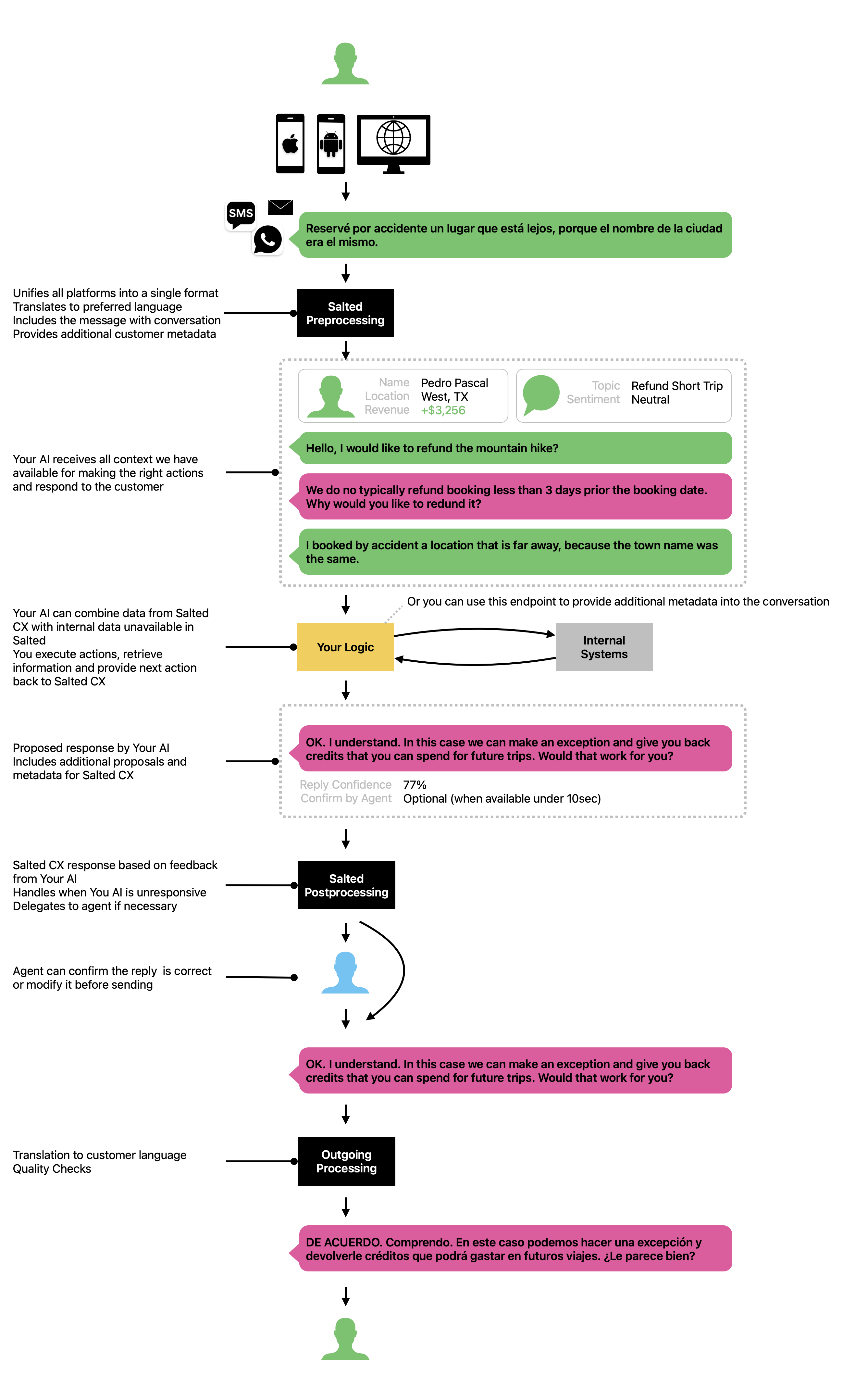Conversation can have quite a complex structure in environments bots involvements, external agents, escalations and other processes. Learn more about how customer journey is structured in Customer Journey Structure. Also check Conversation Examples to understand how some more complex scenarios look in the data.
Engagements in Live Conversations
Each participant (agents, external agents and Your Logic) in a life conversation creates a separate engagement associated with it. Engagements and their status are critical to know whether there is somebody handling the customer.
Live Conversation Properties
Live Conversations have the following properties:
| Property | Type | Description |
|---|---|---|
| Status | Enum | Identifies in which high-level state a conversation is from the customer perspective. Customers and agents return conversation from Completed to In Progress by sending a new message of other content.
In Progress — The conversation is currently in progress.
Completed — The conversation is considered completed from the customer perspective. |
| Needs Help | Boolean | true — The conversation will appear in Needs help navigation section in Live Conversations.
false — The agents are not asked to join the conversation. Agents can still join conversation for example via link to a specific conversation. |
| Your Logic Working | Boolean | true — Your Logic is currently working on a response to an event in a live conversation.
false — Your Logic is NOT currently working on a response to an event in a live conversation. |
| Engage Your Logic | Boolean | true — Salted CX will notify Your Logic about every action in the conversation.
false — Salted CX will NOT notify Your Logic unless this flag changes. |
| Fallback to Agent | Boolean | true — Salted CX did not get a response from Your Logic and had to escalate to an agent as a fallback.
false — Default state, no fallback. |
Custom Conversation Lifecycle
Depending on you business process you might keep track of the state of the conversation. The exact states depend on you business processes and desired customer experience. The high level conversation phases may look like this (with notes on what Your Logic does in those phases):
- Greetings and customer request collection. Greeting the customer and asking them what is their issue (if they have not stated it right away). Collect additional details if the customer has not provided complete information.
- Auto responding to customer request. Providing the customer with the an automated (bot) response to their request (if possible). Your Logic should also watch whether the customer requests escalation to a human agent, handle small talk, detect and respond to requests unrelated to your business, etc.
- Agent or external agent engagement (if required). You Logic can monitor the communication and stay silent. Depending on the implementation it can also step in or take the conversation back in some cases. Your Logic should listen for agents leaving the conversation with or without resolving it and take action depending on the outcome.
- Closing conversation. Your Logic can close the conversation even when the agent handled core of the covnersation to save some agent time. You should use the opportunity to collect customer feedback, encourage customers to reach you again if they need something again and saying goodbye.
If Your Logic relies on keeping track of the conversation state or needs to store other data it can update custom conversation data. Salted CX will then send you your data with the following events.

Message Live Cycle
Each customer message goes thought multiple steps before it reaches the the agent. The same happens for messages sent form the agents.
